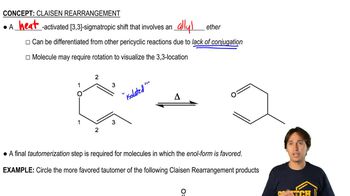Two structures of the sugar fructose are shown next. The cyclic structure predominates in aqueous solution.
(a) Number the carbon atoms in the cyclic structure. What is the functional group at C2 in the cyclic form?
(b) Propose a mechanism for the cyclization, assuming a trace of acid is present.






